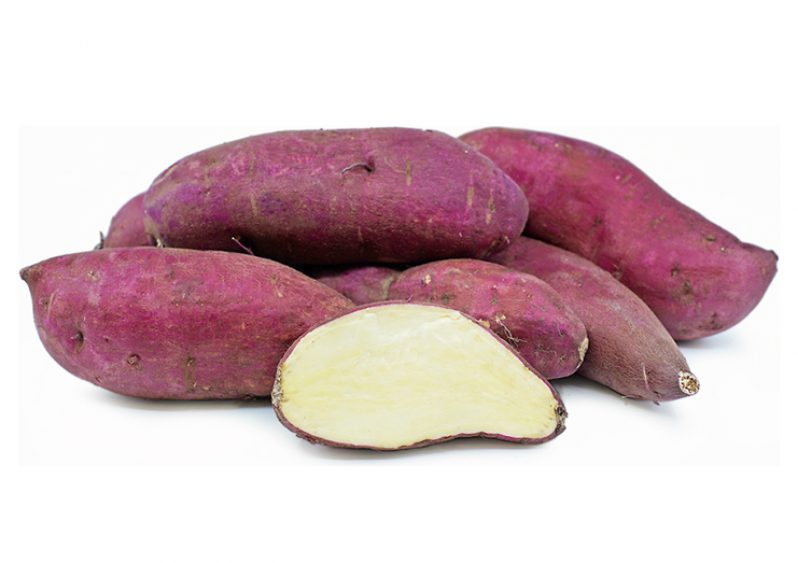Introduction
THIS week, NAREI in Focus begins a series on the production of yams in Guyana. There are several types of yam produced in Guyana. The main type, Dioscorea alato, normally produces a single large tuber, often weighing from 5 kg to 10 kg (11 lbs to 22 lbs). The tubers vary in size and shape and have a brown to golden-coloured skin with white or purplish flesh.
Another type, Dioscorea esculenta, produces a large number of small tubers that typically have numerous uneven sprouting hairs. The tubers have a much-indented shape with purplish-brown skin and white flesh.
A third type, Dioscorea cayenensis, produces tubers of varying sizes and shapes, usually with a pale yellow flesh. Post-harvest care is identical for all types of yam. Yams may suffer considerable post-harvest losses due to moisture (weight) loss, microbial decay, sprouting, and insect attack. These losses affect both market supply and availability of planting material. Yam tubers are harvested once a year and therefore need to be properly stored for maximum market life.
Harvest Maturity Indices
Several indices can be used to determine when to harvest yams. The foliage of most types of yams begins to wilt and senesce when the tubers mature. Therefore, harvesting should take place after a significant portion of the foliage has naturally turned yellow or dried up. Wilted foliage is a sign of physiological maturity of the tuber.
Growth of the tuber is essentially completed several weeks prior to visible wilting. Harvesting should be completed within one or two months of wilting, otherwise, losses due to tuber rot will occur. In some types of yams the vines do not wilt or noticeably senesce. In these types, the tubers should be harvested based on the amount of time from planting. Yams reach maturity between eight and ten months after planting, depending on the cultivar. Several randomly selected plants can be harvested at the beginning of the eighth month after planting to determine the average tuber size in the field.
Harvesting Methods
Yam harvesting is usually done manually. A portion of the soil surrounding the tuber(s) is removed prior to lifting the tubers with a spade or other suitable digging tool. Harvest carefully using tools suited to the soil type and paying attention to the depth to which the tubers penetrate. Harvesting is easier when the soil is moist and the soil texture is light. In light soils, the tuber(s) can be slowly lifted out of the ground by pulling the main stem. In heavier soils or during the dry season, harvesting usually requires digging around the tubers to free them prior to lifting the plant or further digging. While digging and lifting, care should be taken not to injure the tubers, which are delicate and easily bruised during harvesting and handling.
The tubers should never be thrown or dropped. Wounded tissue is an entry point for decay-causing micro-organisms. Pile harvested yams in small heaps or place directly into field crates for removal from the field. Avoid leaving the yams exposed to direct sun for longer than 30 minutes.
Yams should be graded in the field, and unmarketable, damaged, or diseased tubers should be discarded. Damaged tubers are highly susceptible to decay, particularly if the post-harvest curing is inadequate. Choose only healthy and undamaged tubers for curing and storage. Cotton gloves are typically worn to facilitate field cleaning of the tubers.
Sound tubers should be gently dry-brushed to remove excess soil prior to curing. The yams should be gently placed in smooth or padded field containers for transport out of the field. Transporting from the field to the packing house is best carried out using strong, well-ventilated field crates. Transporting in mesh or polypropylene sacks will increase the level of skin damage due to abrasion. When locally made containers have sharp edges or rough inner surfaces, a thin fibreboard liner should be used to protect the tubers from damage during handling and transporting.




.jpg)









